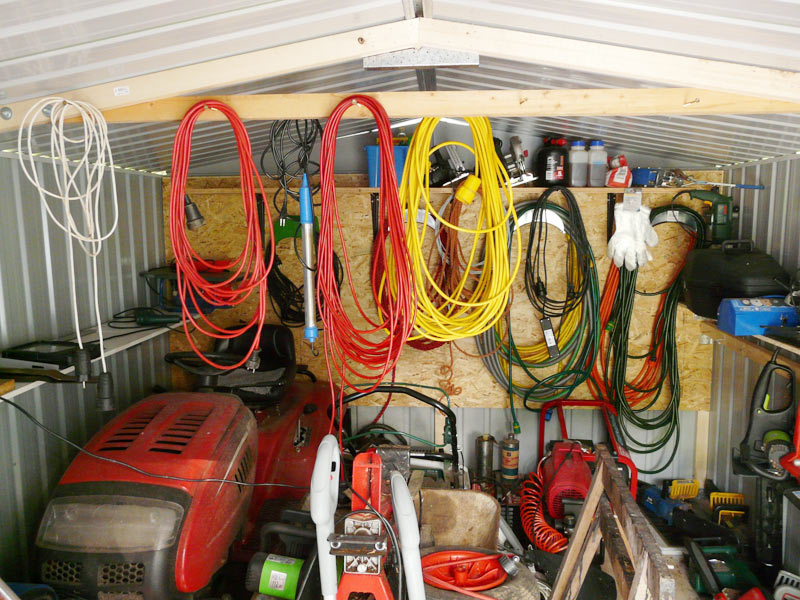Step-by-step winter prep
Here are six lawn tractor/mower storage steps to ensure the motor purrs when you crank it up the next time. Keep your operator’s manual handy for checking details and schematics.
- Storing your mower with a partially full tank is a bad idea. You should either run all the fuel out of the tank, or fill it and add a fuel stabilizer (also known as a fuel preserver). If you’re adding stabilizer, carefully follow package directions. Run the engine for a few minutes to circulate the stabilizer through the system. The turn the engine off and fill the tank. Filling the tank will prevent condensation, and the stabilizer will keep the fuel usable for up to 6 months.
- Park your lawn tractor or mower on level ground in a well-ventilated area, with a dropcloth under it. Warm up the engine.
- Disconnect the spark plug wire and tie it to the frame out of the way.
- Remove and store the battery.
- Disconnect the battery cables, starting with the negative cable first (look for the minus sign).
- Release the strap holding the battery in place if there is one, and lift the battery out.
- Wipe the battery down and inspect for damage.
- Clean the battery terminals with a metal brush. There are several battery cleaning products on the market, as well as battery terminal protectors. Cleaning products are not strictly necessary, but they are good to use.
- Store the battery in a cool, dry place.
- Change the oil. Changing engine oil on a regular schedule is a good policy, and good clean oil now will ensure a strong start in the spring.
- Use the dipstick to check the oil level. Expect it to be black, but check the level to be sure there are no leaks.
- Remove the oil plug or open the drain, and drain the hose and pan.
- Clean the dipstick and check the oil level again to be sure it’s empty.
- Add the proper amount of new oil according to your operator’s manual.
- Finally, remove the oil filter and replace with a new filter.
- Clean the mower. Hose the mower down to remove any debris or grass clippings. Thoroughly clean the cutting deck and the blades, and attach your hose to the wash-out port to flush. Scrape any remaining clumps with a stick or long screwdriver – never use your hands to clean the blades. When all the debris is gone, wipe the entire mower down with a soft cloth.
Proper parking for storage
Park your mower in a dry, protected place, like a garage, barn, or shed. Store your mower well away from combustible materials or any appliance with a pilot light such as a furnace or water heater.
That’s it for end of season maintenance. Once you reinstall the battery and connect the spark plug, your well-oiled machine should crank right up in the spring.
Of course, if you have a lawn tractor, you may be using it for all kinds of winter tasks, like clearing snow or hauling firewood. All you need are the right implements for the job.









